Textured hair holds within its very structure a living chronicle, a testament to ancient wisdom and the enduring strength of heritage. To truly understand its unique characteristics, we look not merely at the science of today, but at the echoes from the source, tracing its biological marvel through generations of care and adaptation. This is not just about proteins and bonds; it is a story of resilience, identity, and the profound connection between our strands and our shared past.
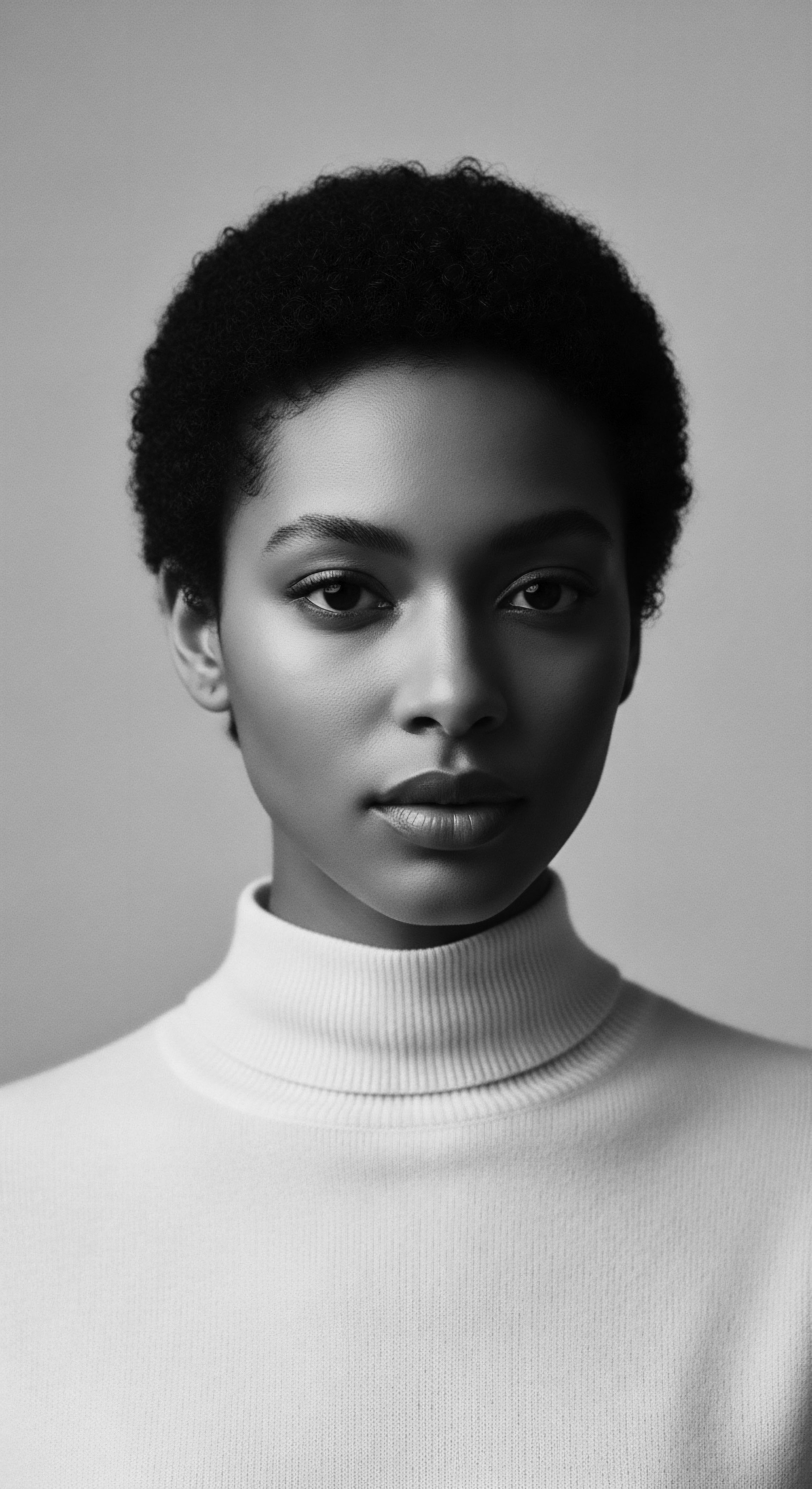
Roots
The intricate curl patterns and remarkable spring of textured hair are a direct product of inherited biological design, a legacy passed down through countless generations. This complex architecture begins at the very root, deep within the scalp. The shape of the hair follicle itself is a primary architect of curl. Unlike the more circular follicles that yield straight strands, textured hair emerges from follicles that are notably elliptical or asymmetrical in cross-section.
This distinctive shape causes the hair shaft to twist and coil as it grows, determining the degree of curl from gentle waves to tight, coily spirals. Furthermore, the angle at which the follicle sits within the scalp also contributes to this curl pattern; follicles that are more angled, or even perpendicular to the scalp, often produce tighter, more defined spirals.
Beyond the follicle’s geometry, the very composition of the hair strand plays a significant part. Hair is composed primarily of keratin , a fibrous protein. The way these keratin proteins are arranged and bonded within the hair shaft, particularly the presence of disulfide bonds , dictates the hair’s shape and mechanical strength.
Textured hair possesses a greater density of these disulfide bonds, which contribute to its more pronounced coiling. While stronger than hydrogen bonds, which are easily broken by water or heat and can cause frizz, these disulfide bonds are essential for maintaining the inherent curl.
The unique geometry of the hair follicle and the specific arrangement of protein bonds within the strand are fundamental scientific factors shaping textured hair’s distinct curl patterns.
The internal and external lipid content also distinguishes textured hair. While textured hair generally exhibits a higher overall lipid content compared to other hair types, it is frequently perceived as dry. This apparent paradox traces back to the hair’s very structure. The curvature of the hair shaft and the spiral shape of the follicles create natural points of weakness, making it more susceptible to moisture loss and breakage.
This structural attribute, rather than a lack of inherent lipids, explains its characteristic dryness. The outer cuticle layer, composed of overlapping, scale-like cells, functions as a protective barrier. When this layer is compromised, whether by external factors or the hair’s own inherent structural properties, it impacts the hair’s ability to retain moisture and defend against damage.

What Ancestral Influences Shaped Hair Biology?
The scientific factors that underpin textured hair are not random occurrences; they are deeply rooted in humanity’s shared past and speak to our biological adaptations to various environments. The prevalence of textured hair among populations of African descent is believed to be an ancient adaptation, offering natural protection against intense ultraviolet radiation. This type of hair may have been the earliest hair type among modern humans, a testament to our ancestors’ resilience and physiological attunement to their surroundings. This biological inheritance, therefore, is not merely a genetic quirk, but a profound connection to the origins of human life on the continent of Africa.
Consider the EDAR gene , for example. This gene, linked to the development and growth of hair follicles, plays a significant part in determining hair thickness and density. Variations in the EDAR gene are associated with differences in hair texture across various populations, including those of Asian and European ancestry, but its role in shaping the characteristics of textured hair is also a subject of study.
Such genetic markers are more than scientific classifications; they represent threads in a vast genetic tapestry, connecting individuals to their ancestral lines and the diverse expressions of human biology. The very way our hair coils and rises speaks to millennia of environmental interplay and inherited traits, a silent language of biological heritage .

Hair’s Inner Architecture
The hair fiber itself is a natural composite system, a miniature marvel composed of several distinct parts.
- Cuticle ❉ The outermost layer, composed of overlapping, flat cells that act as the hair’s primary shield against external elements. A healthy cuticle maintains moisture balance and shine.
- Cortex ❉ The central and most substantial part, accounting for about 90% of the hair’s weight. It contains the keratin proteins that provide mechanical strength, elasticity, and color. The specific arrangement of keratins within the cortex, influenced by the elliptical follicle, dictates the hair’s intrinsic curvature.
- Medulla ❉ The innermost core, a loosely arranged structure that may or may not be present depending on hair thickness. It contributes to volume, strength, elasticity, and overall texture.
These layers are bound by a lipo-protein component known as the Cell Membrane Complex (CMC) , which facilitates the diffusion of molecules into the hair fiber and maintains its integrity. Understanding these foundational biological facts allows us to appreciate the delicate balance required to care for textured hair, a balance that traditional practices often instinctively understood long before modern scientific inquiry.

Ritual
The styling of textured hair has always transcended mere aesthetics, evolving into a rich language of cultural identity and ancestral continuity. The scientific characteristics of textured hair – its unique coily structure, susceptibility to dryness, and propensity for tangles due to the helical twists – have historically shaped the techniques and tools used in its care and adornment. These practices, honed over generations, exemplify a deep, intuitive understanding of hair biology, long before modern scientific terminology emerged.
Consider the ancient and enduring practice of braiding . Historically, braiding in African cultures was not simply a method of styling; it was a communal activity, a social ritual that strengthened family bonds and preserved cultural identity. The very act of braiding, whether in intricate cornrows or flowing Fulani styles, protects the hair by minimizing daily manipulation, reducing breakage, and aiding in moisture retention.
From a scientific perspective, this protective styling mitigates the mechanical stress that textured hair is prone to, shielding its delicate cuticle layers from external damage and preventing tangles that arise from its inherent helical shape. The foresight embedded in these traditional methods showcases an ancestral wisdom that instinctively responded to the biological needs of textured hair.
Traditional styling practices for textured hair, such as intricate braiding, reflect an ancestral ingenuity that instinctively protected the hair’s unique biological vulnerabilities.
The evolution of styling tools also tells a story. While modern hair care boasts an array of synthetic brushes and specialized implements, ancestral tools were often born of necessity and deep knowledge of natural materials. Combs crafted from wood or bone, with wide teeth, addressed the inherent tangling challenge of tightly coiled strands, minimizing breakage.
These were not just instruments; they were extensions of a communal ritual, used gently, often during shared moments, to honor and maintain the hair. The preference for finger-detangling, still practiced widely today, echoes this gentle, deliberate approach, minimizing friction and preserving the hair’s delicate structure.

How Does Heat Application Contrast Traditional and Modern Practices?
The use of heat on textured hair offers a telling contrast between traditional understanding and contemporary practices. While today’s salons frequently employ high-temperature tools for thermal reconditioning, a practice known to cause permanent damage to the cuticle and cortical structures, ancestral methods of ‘straightening’ or ‘stretching’ hair, when they existed, typically involved less intense heat sources, often combined with natural oils. These earlier approaches were far less aggressive, aiming to temporarily alter the hair’s form rather than permanently denature its protein structure.
For instance, processes involving heated stones or mild tension, coupled with emollient plant butters, would have primarily affected the weaker hydrogen bonds within the hair, allowing for temporary elongation without the widespread destruction of disulfide bonds. This discerning application of heat or tension speaks to a nuanced appreciation of the hair’s resilience.

A Living Archive of Care ❉ The Diaspora’s Styling Language
The history of textured hair styling in the diaspora is a testament to cultural survival and creative adaptation. During the era of enslavement, traditional hair practices, including braiding, often persisted as quiet acts of resistance against forced assimilation and cultural erasure. These practices served as clandestine maps, conveying messages and providing comfort, all while preserving African identity under immense pressure. The scientific fragility of textured hair, its dryness and propensity for breakage if not properly cared for, made these traditional methods of protection and manipulation even more essential for survival and self-preservation.
The natural hair movement , particularly prominent in the early 2000s, stands as a contemporary echo of this historical resilience. It consciously rejected Eurocentric beauty standards that often necessitated chemical straightening, which, from a scientific standpoint, relies on breaking the hair’s disulfide bonds and significantly reducing its sulfur content, leading to weakening and increased fragility. The movement championed styles that celebrated the hair’s inherent texture, prioritizing health and ancestral connection. This shift was not merely a stylistic choice; it was a profound act of reclaiming cultural narrative and affirming the intrinsic beauty of textured strands, understanding their biological design as a crown of heritage .
| Aspect Styling Goal |
| Traditional Approach (Heritage-Infused) Cultural expression, spiritual connection, protection, communal bonding, identity marking. |
| Modern Approach (Scientific & Evolving) Aesthetics, manageability, versatility, trend conformity, personal expression. |
| Aspect Key Techniques |
| Traditional Approach (Heritage-Infused) Braiding (cornrows, Fulani, Bantu knots), twisting, threading, natural adornment. |
| Modern Approach (Scientific & Evolving) Thermal reconditioning, chemical straightening (relaxers), various extensions, blow-drying. |
| Aspect Tool Philosophy |
| Traditional Approach (Heritage-Infused) Hand-crafted, wide-toothed combs, fingers; gentle manipulation to reduce breakage. |
| Modern Approach (Scientific & Evolving) Metal combs, flat irons, curling wands, blow dryers; tools often prioritize efficiency. |
| Aspect Underlying Hair Science (Intuitive) |
| Traditional Approach (Heritage-Infused) Understood hair's fragility, need for protection from sun/elements, moisture retention via oils. |
| Modern Approach (Scientific & Evolving) Analyzes disulfide bonds, protein denaturation, cuticle damage, moisture loss at molecular level. |
| Aspect Impact on Hair Health |
| Traditional Approach (Heritage-Infused) Generally protective, emphasizing longevity and minimal stress. |
| Modern Approach (Scientific & Evolving) Can cause significant damage (e.g. cuticle fusion, protein loss) if not used with care. |
| Aspect The evolution of textured hair styling showcases a continuous dialogue between ancestral knowledge and contemporary scientific understanding, each striving for hair health and expression. |

Relay
The very composition and behavior of textured hair dictate its care, a dialogue that has transcended generations and continents. Understanding what scientific factors contribute to its distinct characteristics allows us to appreciate the deep resonance of ancestral wisdom in modern care regimens. Textured hair, with its elliptical shaft and numerous bends, faces unique challenges concerning moisture retention and susceptibility to breakage. These biological realities underpin the emphasis on hydration and gentle handling that defines ancestral practices and is now affirmed by science.
The historical context of hair care for people of African descent reveals an enduring resourcefulness. Stripped of traditional tools and methods during enslavement, ancestral communities adapted, using available natural ingredients and communal practices to maintain hair health and cultural continuity. This speaks to a profound observational science, where the effects of various plants and animal products on hair were learned through generations of trial and transmission.
For instance, the use of shea butter , coconut oil , and aloe vera , long staples in African hair care, provided lipids and moisture, addressing the inherent dryness of textured strands. Modern science validates the conditioning and protective properties of these traditional materials.
The enduring practices of textured hair care from antiquity to today are deeply informed by its inherent biological design and the historical ingenuity of ancestral communities.
The delicate balance of moisture within textured hair is a central challenge. Its spiral structure impedes the natural flow of scalp oils down the hair shaft, contributing to dryness. This biophysical reality means textured hair often has a lower water content compared to straight hair and reduced sebaceous gland activity. This scientific understanding affirms why hydration has always been a cornerstone of care in communities with textured hair, often through the application of various oils and plant-based infusions.
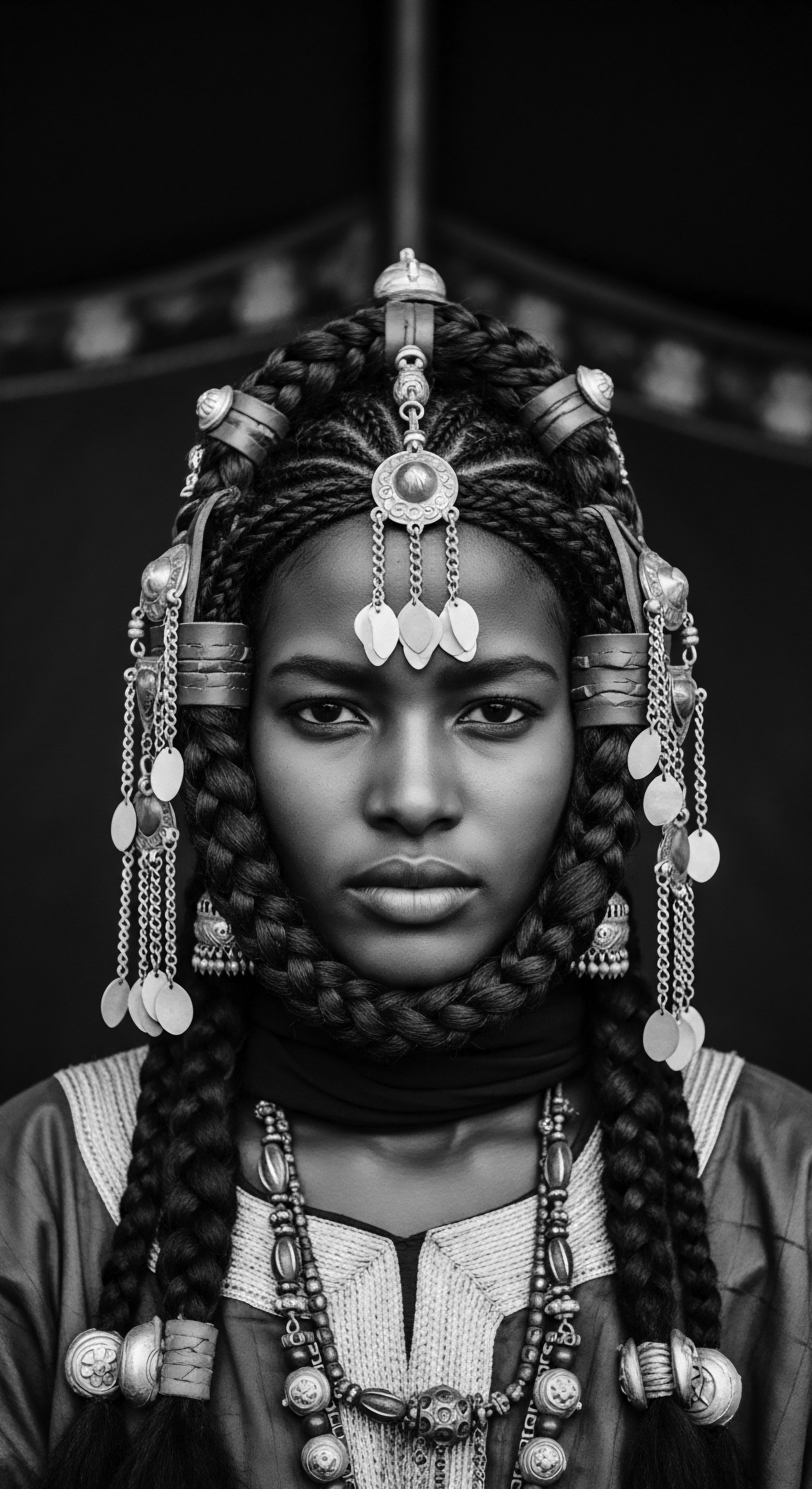
How Does Nighttime Protection Honor Ancestral Wisdom?
The nighttime rituals for textured hair, particularly the use of head coverings, are a prime example of science meeting ancestral wisdom. The delicate nature of textured hair, especially its cuticle layers, makes it prone to damage from friction. Sleeping on abrasive surfaces like cotton pillowcases can ruffle the cuticle, leading to dryness, tangles, and breakage. The use of satin or silk bonnets and scarves — or sleeping on satin or silk pillowcases — addresses this directly, creating a smooth surface that reduces friction, thereby preserving the hair’s moisture and structural integrity.
This protective practice has roots in ancestral traditions that valued the preservation and spiritual significance of hair. Covering the hair at night, or in specific social contexts, was not merely for practical purposes; it was a gesture of respect, a recognition of hair as a sacred part of the self and a conduit to ancestral wisdom. While the scientific explanation for reduced friction is a modern articulation, the practice itself carries the weight of generations, a quiet act of care passed down from mother to child, rooted in an intuitive understanding of hair’s fragility and its need for gentle protection.
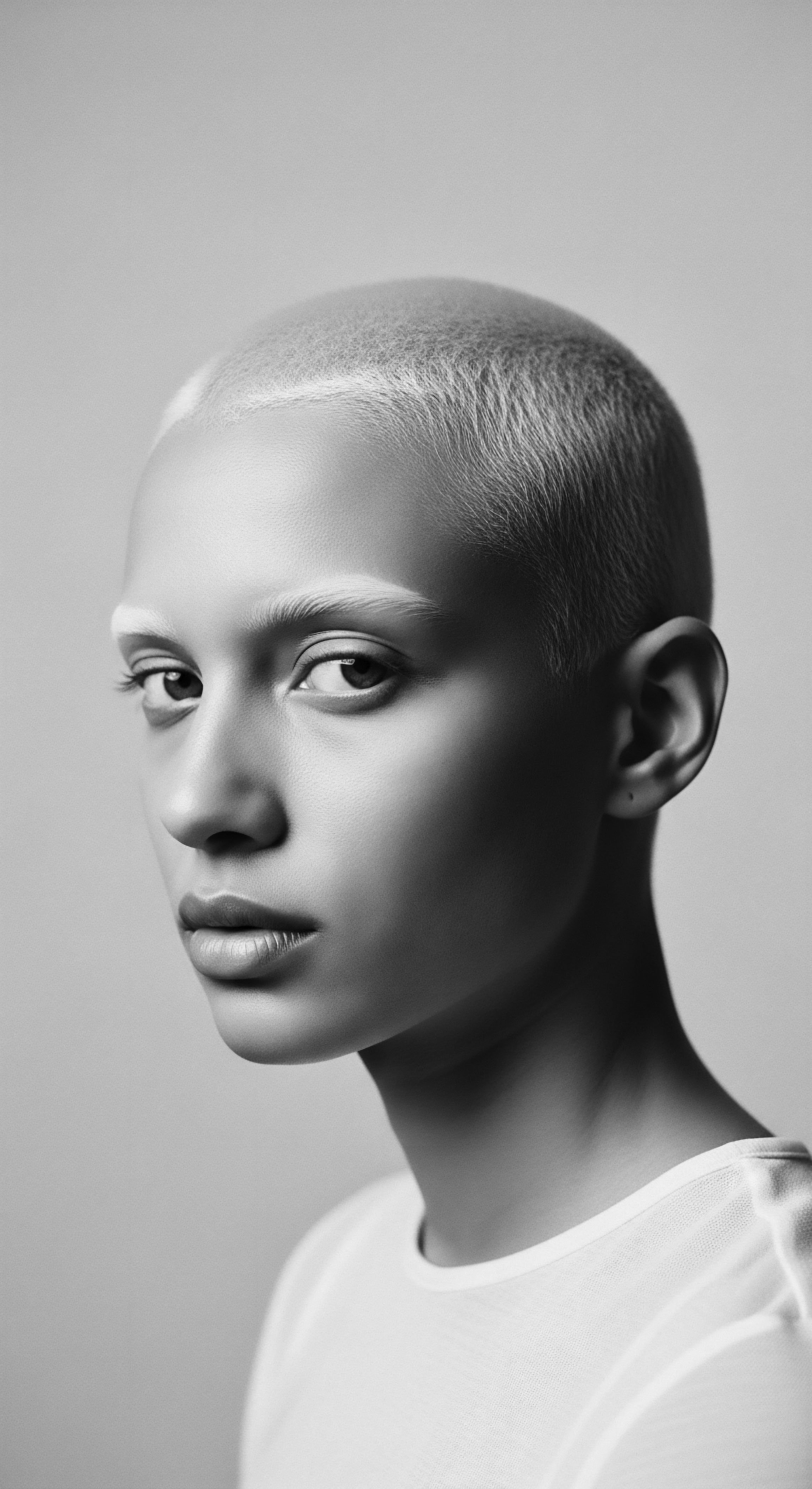
Ingredients for Resilience ❉ Echoes of the Earth
The deep dive into ingredients for textured hair care reveals a lineage of healing and nourishment. Ancestral communities often turned to the earth’s bounty, selecting plants and herbs with properties that countered the specific vulnerabilities of their hair. The scientific study of these traditional ingredients often confirms their efficacy.
- Shea Butter (Vitellaria paradoxa) ❉ A rich emollient traditionally used for its moisturizing and protective qualities. It forms a barrier that helps seal moisture into the hair shaft, reducing dryness and external damage.
- Coconut Oil (Cocos nucifera) ❉ Known for its ability to penetrate the hair shaft, reducing protein loss. It has been used for millennia as a pre-shampoo treatment and conditioner.
- Aloe Vera (Aloe barbadensis miller) ❉ A succulent plant whose gel possesses hydrating and soothing properties, beneficial for both scalp health and hair moisture.
- Henna (Lawsonia inermis) ❉ Beyond its use as a dye, henna has been employed for thousands of years in cultures including East Indian traditions to condition, strengthen, and nourish hair, promoting scalp health and thickness.
- Amla (Phyllanthus emblica) ❉ An Ayurvedic ingredient rich in vitamin C and antioxidants, used to fortify strands, lessen breakage, and encourage growth.
These ingredients, often used in conjunction with thoughtful application methods, represent a holistic approach to hair wellness, linking the body to the rhythms of nature and the wisdom of the past. The scientific analysis of their molecular components today simply offers a different language to describe benefits long observed and cherished.
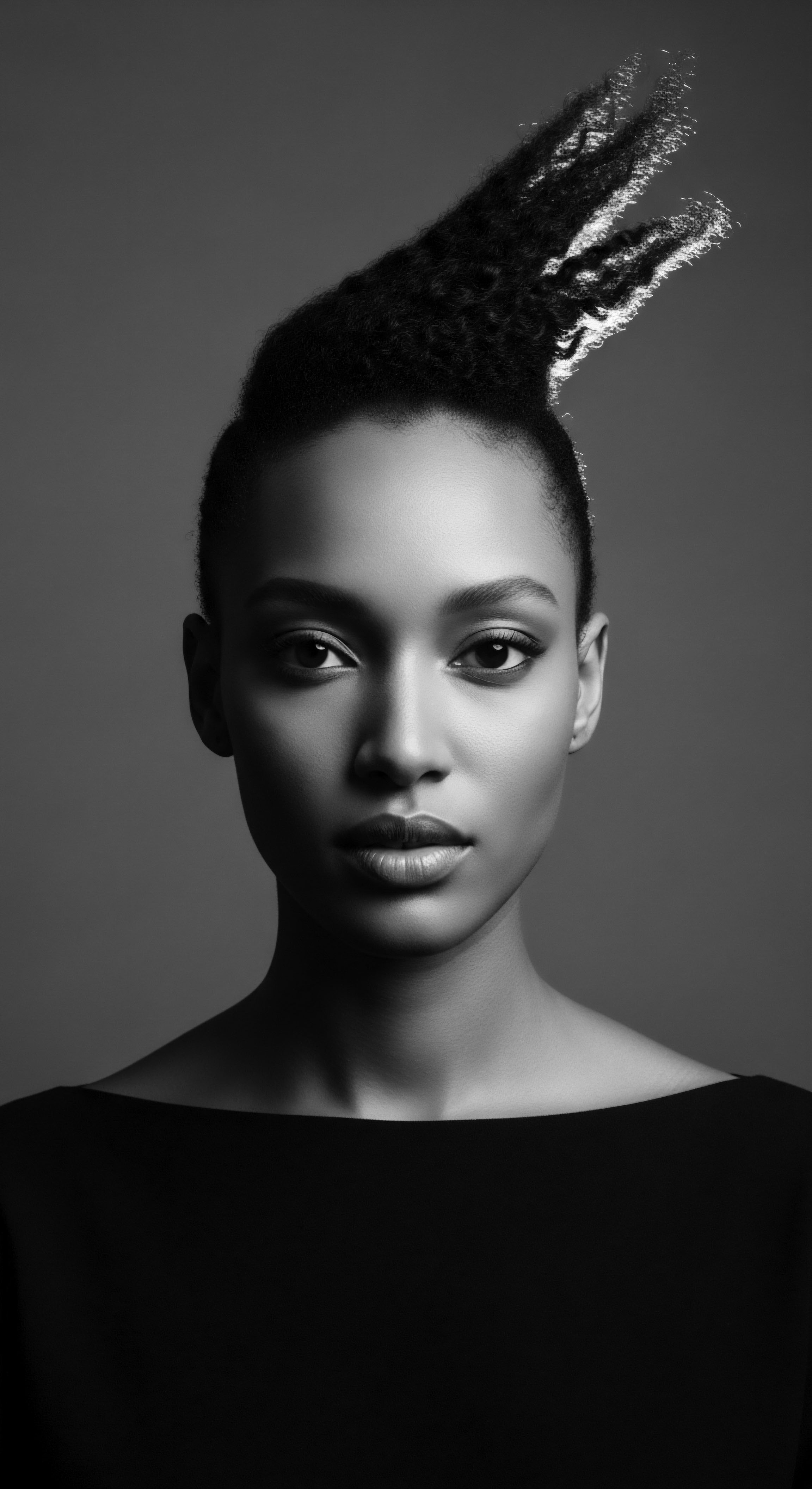
Relay
The journey of textured hair, from its microscopic architecture to its visible expressions, is a profound narrative, deeply intertwined with human heritage. The scientific characteristics that grant textured hair its unique qualities—the elliptical hair follicle, the specific distribution of disulfide bonds, and its inherent propensity for dryness—are not isolated facts. They are biological cornerstones upon which centuries of cultural practices and enduring traditions have been built. This interconnectedness allows for a sophisticated understanding of hair health, one that moves beyond surface-level care to embrace a holistic wisdom passed down through generations.
The study of hair’s biomechanical properties reveals an intrinsic fragility in textured strands. Its numerous twists and bends, a direct consequence of the elliptical follicle shape, result in areas of reduced mechanical resistance, rendering it more vulnerable to fracture than straight hair. This scientific reality explains why traditional hair care often prioritized gentle manipulation, protective styling, and moisture retention.
Such practices, appearing as simple rituals, were in fact sophisticated, intuitive responses to the hair’s biological needs, designed to safeguard its delicate structure against daily wear and environmental stressors. The historical reliance on slow, deliberate detangling methods and the application of rich, natural emollients were not just cultural quirks, but acts of profound scientific care, passed from hand to hand across ancestral lines.
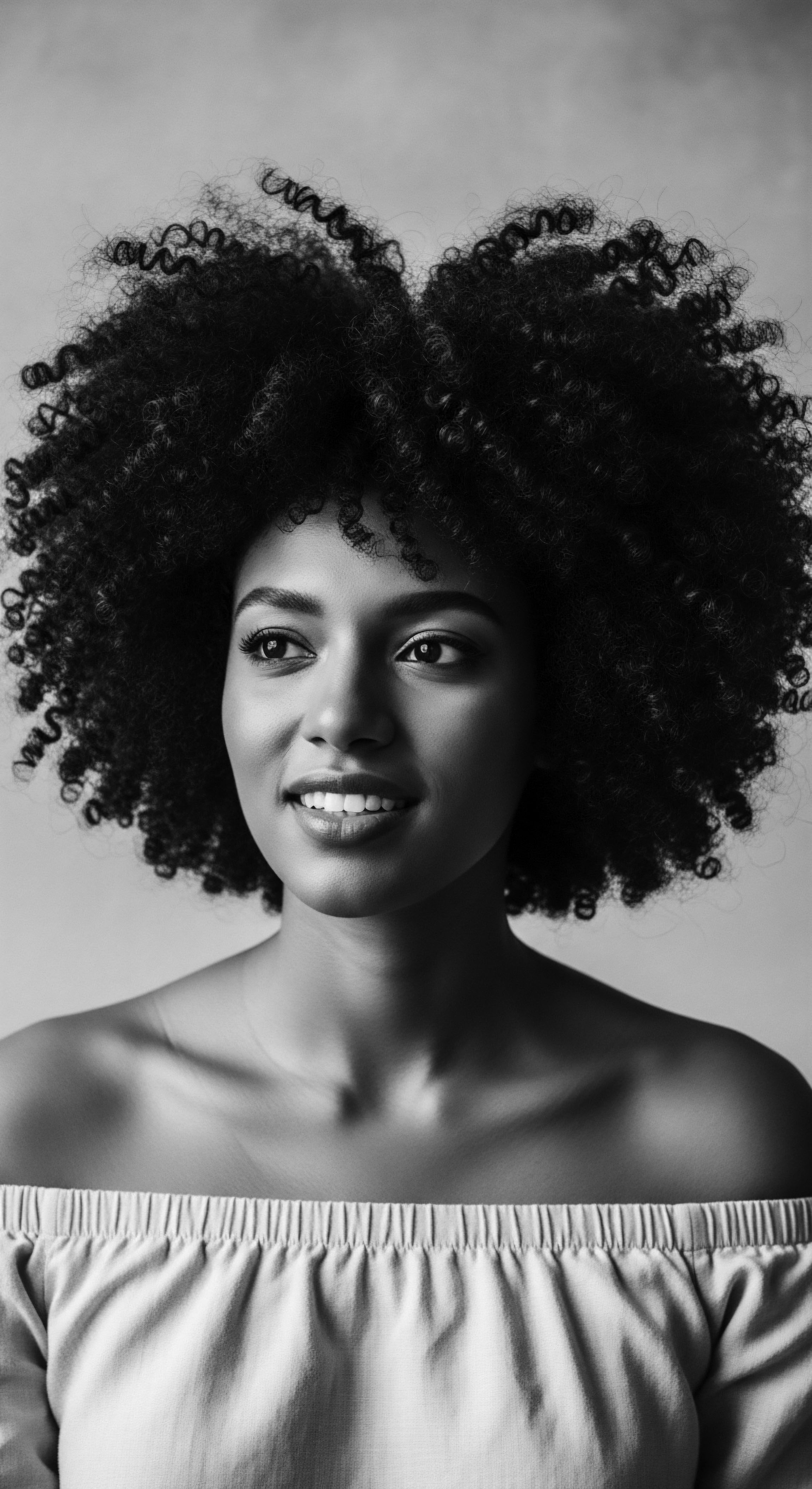
What Insights Does Genetics Offer About Hair’s Deep Past?
The genetic underpinnings of textured hair provide a compelling link to our shared human history. While hair texture is a polygenic trait influenced by many genes, the EDAR gene stands as a prominent example, demonstrating how inherited factors shape the very growth and form of our hair follicles. This gene, associated with hair thickness and density, also contributes to the curly or coily patterns characteristic of textured hair.
Its variations across different populations underscore millennia of adaptation, with textured hair widely regarded as an evolutionary response providing UV protection in equatorial climates. The DNA within each strand thus carries whispers of our ancestral migrations, biological ingenuity, and the subtle yet powerful ways our bodies learned to thrive in diverse environments.
An ethnographic study by Ingrid Banks in 2000, focusing on the impact of hairstyle politics on the self-identity of Black American women, compellingly illustrates how deep-seated heritage and societal pressures have shaped hair practices. The study highlights the significant influence of hegemonic white beauty standards, causing considerable cultural violence against Afro-textured hair. Banks’ work underscores how the natural hair movement, which emerged in the same year, was a crucial act of emancipation , encouraging women to wear their natural textures as a challenge to Eurocentric norms and a reclaiming of their ancestral identity.
This sociological evidence supports the biological facts, demonstrating how the scientific reality of textured hair has been intrinsically linked to the social and political experiences of Black and mixed-race communities throughout history. The choice to embrace natural hair is a deliberate act of self-love and cultural affirmation, a direct response to a historical narrative of suppression and a powerful acknowledgment of one’s biological and cultural lineage.

Understanding Hair’s Hydrophilicity and Lipid Content
The interaction of textured hair with water is another critical scientific factor shaping its care. While often perceived as dry, Afro-textured hair exhibits a comparatively lower radial swelling in water compared to Asian and European hair, attributed to its higher levels of apolar lipids. However, the hair’s unique structure, with its twists and turns, often results in compromised cuticle integrity at the curves, leading to increased porosity in certain areas. This increased porosity, while not always uniform across the entire strand, can allow for both easier absorption and quicker loss of moisture, contributing to the sensation of dryness.
The lipids within the hair cuticle layers are vital for maintaining hair integrity, hydrophobicity, and moisture. When these lipid barriers are disturbed, perhaps through chemical treatments or excessive mechanical stress, the hair becomes even more vulnerable to water loss and degradation.
This complex interplay between lipid content, structural integrity, and water interaction necessitates the thoughtful, gentle, and consistent care practices that have long characterized hair traditions within diasporic communities. The ancestral emphasis on sealing moisture with natural oils and butters, often applied after water-based cleansing or conditioning, intuitively countered the hair’s natural tendencies towards dryness and vulnerability. This nuanced understanding of hair’s biophysical properties, developed over centuries of observation and communal sharing, now finds its echo in modern scientific explanations, providing a deeper layer of meaning to acts of care deeply woven into the fabric of heritage .

Reflection
As we gaze upon a single strand of textured hair, we perceive not just its unique curves and resilient spring, but an entire cosmos of heritage . Each coil and twist holds within it the whispers of ancestors, the resilience of countless generations who navigated new lands, forged communities, and expressed identity through the very hair upon their heads. The scientific factors that contribute to textured hair’s distinct characteristics—the elliptical follicle, the intricate protein bonds, the unique lipid composition—are not mere biological footnotes. They are foundational elements of a living legacy, a testament to human adaptation and survival.
This hair, so often misunderstood or marginalized in dominant narratives, is a profound archive. It speaks of ancient traditions of care, of the intuitive science of discerning which herbs soothe a scalp or which oils seal in moisture. It reminds us of moments of shared ritual, where braiding became a language of connection, resistance, and artistry, a conversation across time that transcends words. The strength of textured hair, both in its biological make-up and its cultural significance, lies in its ability to adapt, to absorb, and to stand as a visual marker of identity that has, through epochs of struggle and triumph, refused to be erased.
To tend to textured hair, then, becomes an act of reverence, a continuation of a sacred dialogue with the past. It is an acknowledgment that the well-being of the strand is inextricably linked to the well-being of the soul, a deep affirmation of inherited beauty and wisdom. The journey to understand this hair is a passage into a deeper understanding of self, community, and the vibrant, ever-present spirit of ancestry that flows through every living strand. It is a commitment to ensuring that the stories, the science, and the profound heritage of textured hair are not only preserved but celebrated, allowing its unique characteristics to continue speaking volumes for generations yet to come.
References
- Afolayan, F.A. & Maumela, S. (2022). Afro-Ethnic Hairstyling Trends, Risks, and Recommendations. Cosmetics, 9(1), 18.
- Almeida, C. et al. (2022). Porosity and Resistance of Textured Hair ❉ Assessing Chemical and Physical Damage Under Consumer-Relevant Conditions. Cosmetics, 9(6), 118.
- Banks, I. (2000). Hair Matters ❉ Beauty, Power, and Black Women’s Consciousness. New York University Press.
- Blake, J. et al. (2015). Contemporary African-American Hair Care Practices. Journal of Clinical and Aesthetic Dermatology, 8(5), 23-26.
- Davis, M.G. (2019). Braided Archives ❉ Black Hair as a Site of Diasporic Transindividuation. York University.
- Leveque, N. et al. (2010). Biophysics of Human Hair. In Biophysics of Human Hair (pp. 1–20). Springer.
- Lyte, J. et al. (2023). The Person Beneath the Hair ❉ Hair Discrimination, Health, and Well-Being. International Journal of Environmental Research and Public Health, 20(15), 6523.
- Omi, K. et al. (2008). A scan for genetic determinants of human hair morphology ❉ EDAR is associated with Asian hair thickness. Human Molecular Genetics, 17(6), 835-843.
- Phillips, L.G. et al. (2024). Historical Perspectives on Hair Care and Common Styling Practices in Black Women. Journal of Drugs in Dermatology, 23(3), 218-223.
- Rosado, S.D. (2007). Nappy Hair in the Diaspora ❉ Exploring the Cultural Politics of Hair Among Women of African Descent. University of Florida.
- Tchobo, F.P. et al. (2023). Cosmetopoeia of African Plants in Hair Treatment and Care ❉ Topical Nutrition and the Antidiabetic Connection? Cosmetics, 10(4), 98.
- Terence, H.R. et al. (2023). Genomic Variation in Textured Hair ❉ Implications in Developing a Holistic Hair Care Routine. Cosmetics, 10(4), 100.
- Uche, T. et al. (2022). Investigation of the Changes in the Hair Cuticle Due to Chemical Degradation. International Journal of Research Publication and Reviews, 3(6), 3968-3972.
